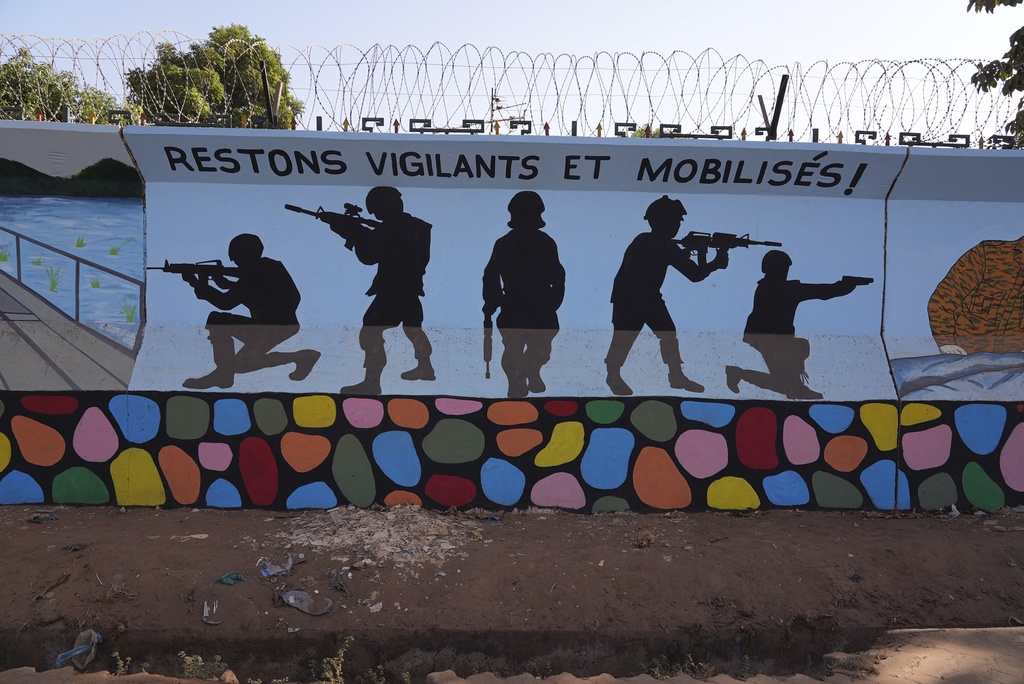ADF STAFF
The attempt by Burkina Faso’s ruling junta to rein in the Islamic State in Greater Sahara (ISGS) group has produced few results and led to more military and civilian deaths even as the extremists have added to their own ranks, according to expert analysis.
Extremists have committed an estimated 5,000 acts of terrorism in Burkina Faso since January 2022, when a coup led by Lt. Col. Paul-Henri Sandaogo Damiba deposed then-President Roch Marc Christian Kaboré. Damiba claimed to have launched the coup out of frustration at the government’s failure to stop terrorism.
Eight months later, Damiba was overthrown by Capt. Ibrahim Traoré for much the same reason. Traoré, who currently leads the ruling junta, also appears to be struggling to control ISGS and other extremist groups.
In recent months, ISGS expanded its footprint in Burkina Faso by absorbing members of Ansar al-Islam, leaving that organization defunct.
An ISGS attack in Oudalan province in February killed 50 Burkinabé Soldiers. In April, another attack killed 40 Soldiers and civilian militia members in Aoréma.
A month after taking power, Traoré enlisted Burkinabé citizens in militias known as Volunteers for the Defence of the Fatherland (VDF). Those 90,000 militia members, who receive limited training and light arms, have borne many of the recent attacks by ISGS along Burkina Faso’s borders with Niger and Mali and also near its southern borders with Togo and Benin.
“The massive arming of the population to involve them in the fight against jihadist groups makes civilians the prime targets of the latter, who attack them in retaliation,” researcher Tanguy Quidelleur at the Institute of Social Sciences of Politics told Le Monde.
The attack in mid-May on the city of Kompienga near the Togo-Benin border was a reminder that ISGS and other extremist groups based in the Sahel continue to push into the countries lying to the south with the goal of establishing supply corridors to the West African coast.
The western Sahel region, which includes Burkina Faso, now accounts for more than 40% of the world’s terrorism deaths, according to the Global Terrorism Index. The tri-border region between Mali, Burkina Faso and Niger has been the epicenter of this crisis.
ISGS, for example, has a stronghold in Menaka, Mali, from which it launches attacks into Burkina Faso. One such attack in the Burkinabé community of Guessel killed eight VDF members and 12 civilians.
Burkina Faso ranks second behind Afghanistan on the Global Terrorism Index’s list of countries most affected by terrorism. Mali is fourth on the list.
“The Sahel is home to the world’s fastest growing and most deadly terrorist groups,” the Index’s authors wrote. “Islamic State (IS) and its affiliates remained the world’s deadliest terrorist group in 2022 for the eighth consecutive year, with attacks in 21 countries.”
Globally, 119 countries reported no terrorist activity in 2022, leaving a small number of other countries — many of them in Africa — to experience the brunt of extremist attacks. Terrorism deaths have also fallen by nearly 60% worldwide, making the experience of countries such as Burkina Faso even more stark.
Since extremists launched their campaign against Burkina Faso in 2015, 13,000 people have died in terrorist attacks, according the Armed Conflict Location & Event Data Project. Some of those were civilians killed by the Army and VDF forces.

